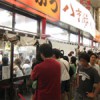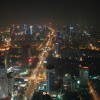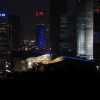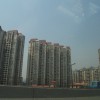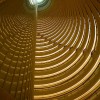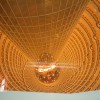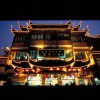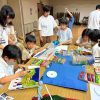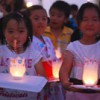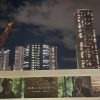Theme”Individuality in Lighting Design”
Interviewer: Ye Yu


An example of too much individuality in Chinese lighting design.

An example of individualistic lighting blending with the natural surroundings.
Ye:Today I would like to talk about uniqueness and individuality in lighting design. For me, I think individuality is unnecessary in lighting design. However, in China many designers like to emphasis their own individuality in projects. Maybe they need to express individuality to become a top designer and the Chinese make this easy by valuing individual uniqueness in projects. Mr. Mende do you like individuality in lighting design?
Mende:Yes, I think projects should have individuality, but there are ways to go about it and this is the difficult part. A few wrong steps and a project can quickly go from odd to bizarre to tasteless.
Ye:Do you think LPA`s projects have individuality?
Mende:Sometimes LPA`s projects are visited by acquaintances and without any prompting they deduce “Is this LPA`s work?” So one could say this might be LPA`s individuality.
Ye:I often hear feedback like “This is so LPA.” I think LPA has its own style, but I can`t put my finger on it.
Mende:I do not tell the LPA staff to “create something especially unique” or “do something radical.” But I am also not going to reject new ideas or methods of expression.
Ye: Since I have been with LPA the one phrase I hear often is “create people-friendly light.” When the staff are working on a project, I think we are only really thinking about one thing; “light.” I hardly ever hear co-workers say we “should try special methods” or “do something different from other projects.”
Mende:Indeed. At LPA we have a few simple core rules that are strictly followed; specify a minimal amount of fixtures, minimal colouring, and glarelessness. All designs are based on these rules which might lead to a LPA design style. It all begins with the basics.
Ye:This could be a more mature form of individuality. How can LPA continue to stick to the basics of their design?
Mende:Our central work as designers is to interpret what the architect wants and make it even better through light. I`ve almost never been asked by a client or architect to create something individualistic. We can maintain this individual style through continued evolution of our technical expertise and philosophy.
Ye: I think it really is beautiful when we can just simply design light. Chinese designers feel the need for unnecessary design elements in addition to light. They must think that if it isn`t different or prominently outstanding it is not good enough.
Mende:Creating something novel or original is not all that difficult. One just has to do the opposite of what has already been done, or in other words break the status quo.
However, I think the problem is will this new idea be accepted by everyone as comfortable lighting? A designer is not in a position to express individuality like an artist. Self-satisfaction and public acceptance as “good” lighting are two different things.
Ye:Have you even been asked by a Japanese client to “create something unique or individualistic?”
Mende:Clients like this are rare. But the technology for LEDs and computerized controls are developing at rapid speed. Accordingly, I think novel lighting design methods will also increase, but this is different from individuality in design.
Ye:I guess we can conclude that individuality is created through experience, technology, and a solid philosophy. Slowly oozing individuality is a beautiful thing. Desperation is not.





